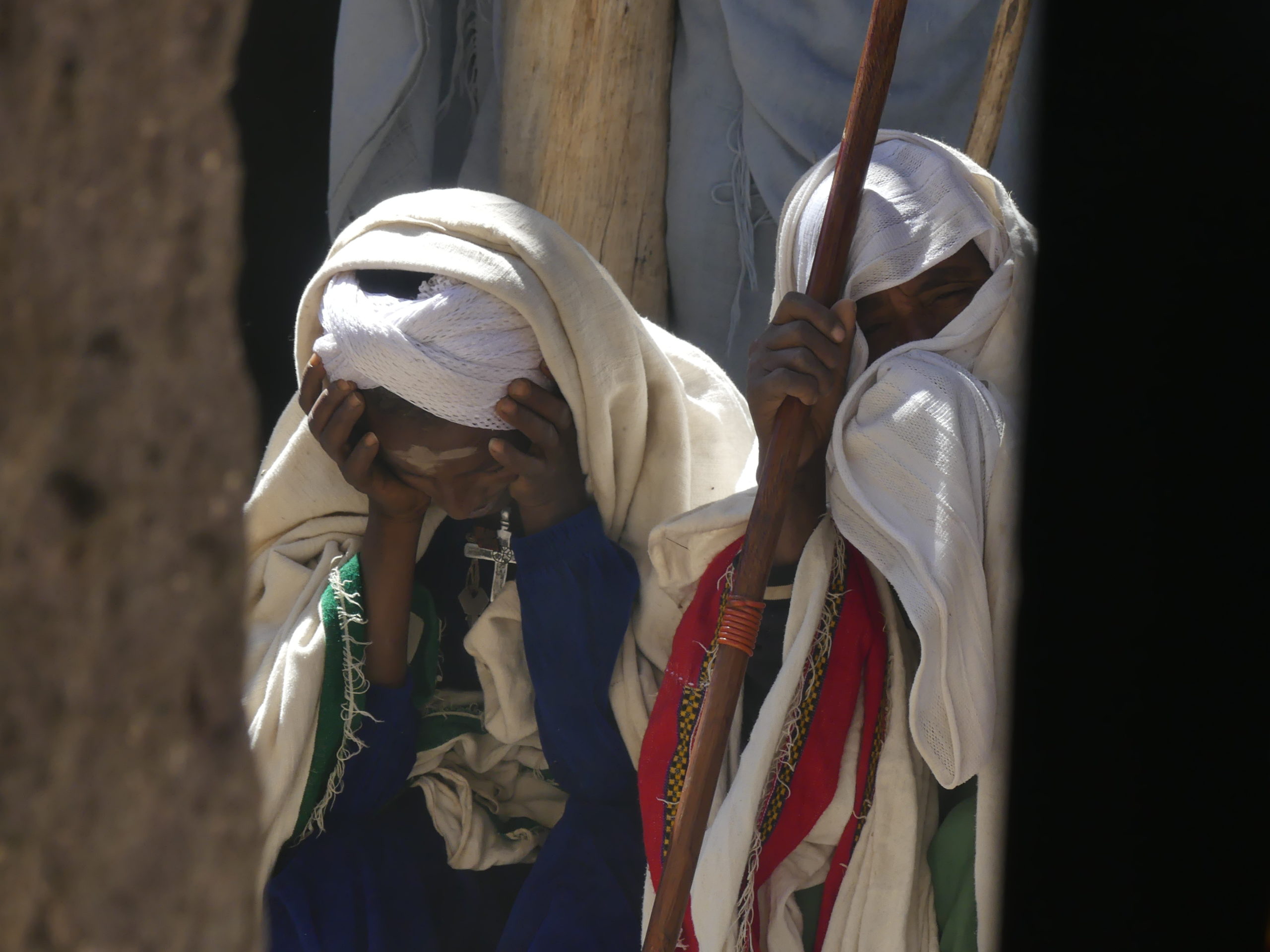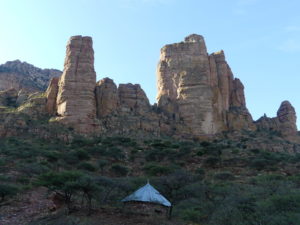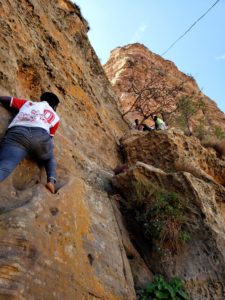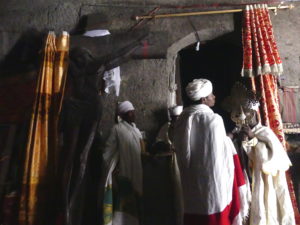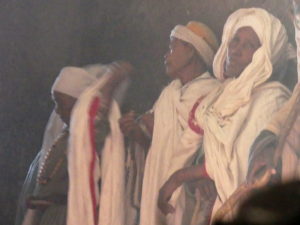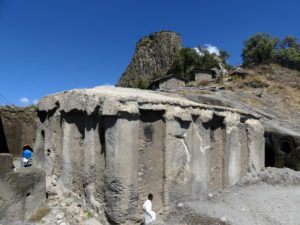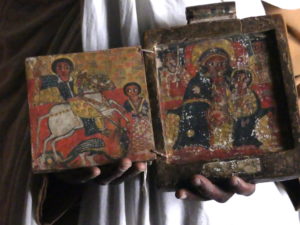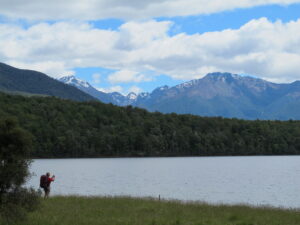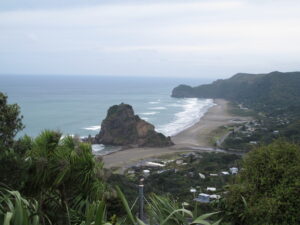Ethiopia has many rock cut Coptic churches that have been serving its adherents for centuries. Here we tell about two of them we labored to reach.
Abuna Yemata
Of all these, for us, the 1500 year old cavern church of Abuna Yemata surely was the high point for two reasons.
First, the sacredness of the place and its aesthetic qualities. For, in addition to storing many ancient illustrated texts, the church’s walls are covered with superb paintings of saints and spiritual leaders dating back to its original construction.
One example is the exuberant and vivid celebration on the cave ceiling of the nine saints of the Coptic church.
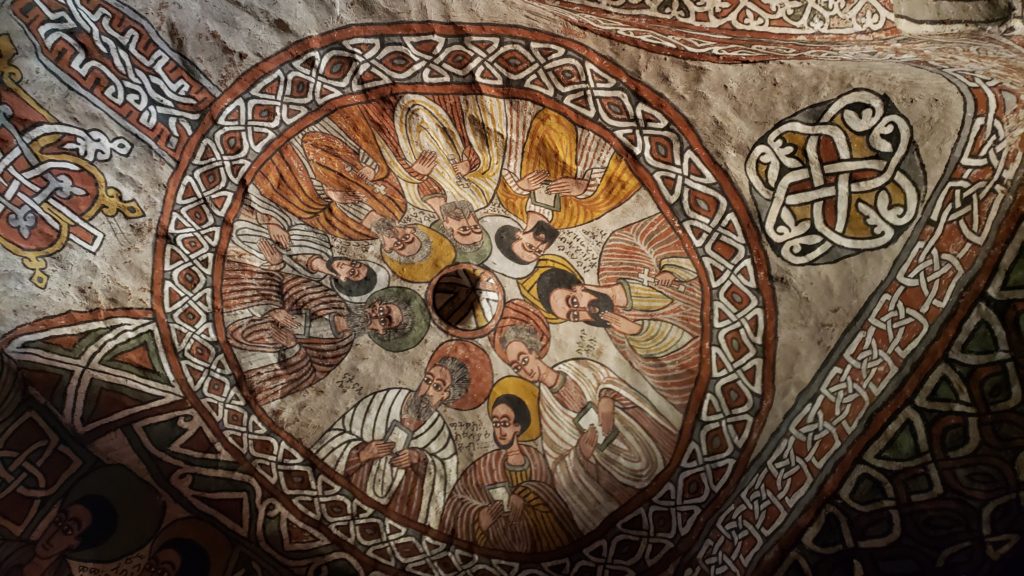
The second reason is the death-defying ascent required to reach the church 400 meters (1350 feet) above its rock wall base.
From the mountain’s base, Abune Yemata – set into the U-shaped notch of the sandstone cliffs at about 2500 meters (8500 feet) above sea level – looked much more approachable than it proved to be.
The first part was just steep. Then came the vertical wall, with just hand and foot niches keeping us from a meeting with eternity.
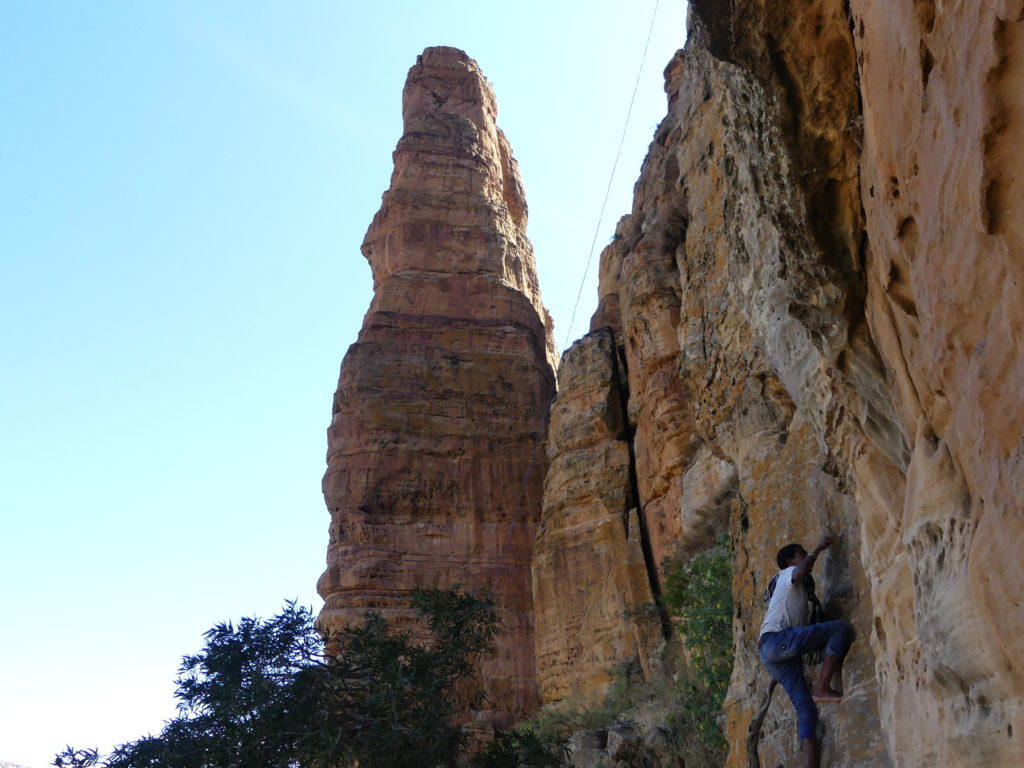
Those niches, plus the cadre of local pushers who hoisted, supported and otherwise advised us on the best way to stay alive using those niches. In the past, they would haul visitors up and down with harnesses to keep them safe. No more, for the gear was damaging the rock surface.
Catching our wits and breath after another section of tricky but not vertical rock climbing, we first tried to savor the Valley view from the summit.
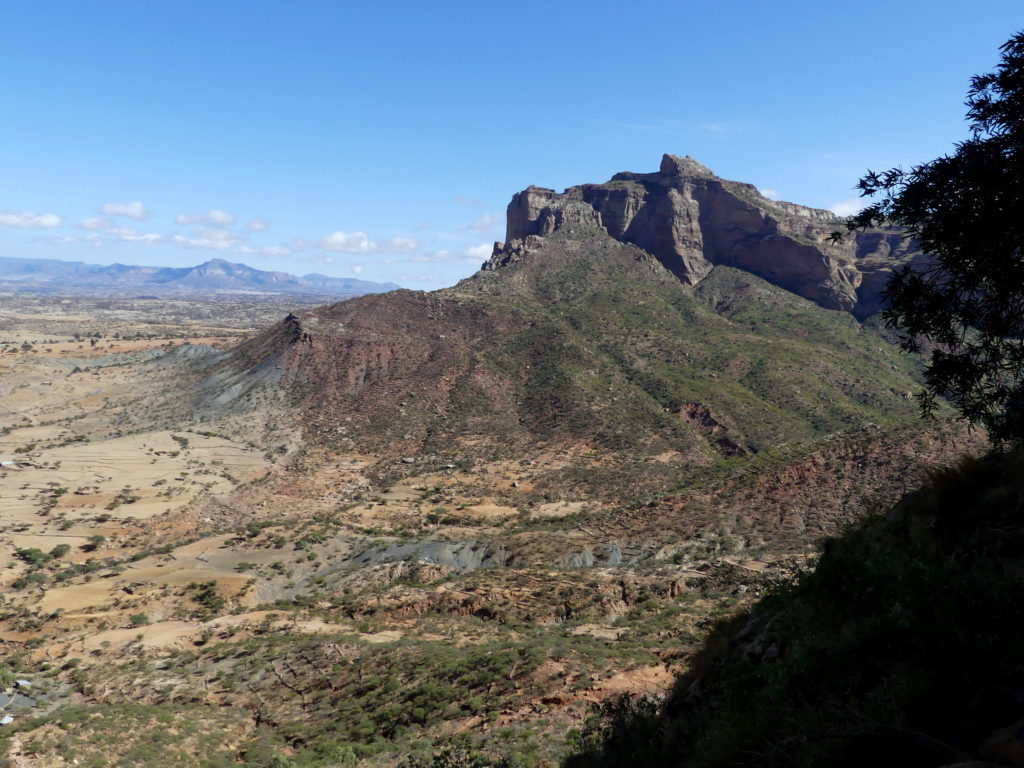
Some climbers, like one we met above, stop functioning by this point, overwhelmed by the mental and physical challenge.
Finally, we crossed a narrow stone bridge atop the sandstone cliff, inched our way along a narrow ledge overlooking the sheer vertical drop. Here is the precipice we faced on that ledge.
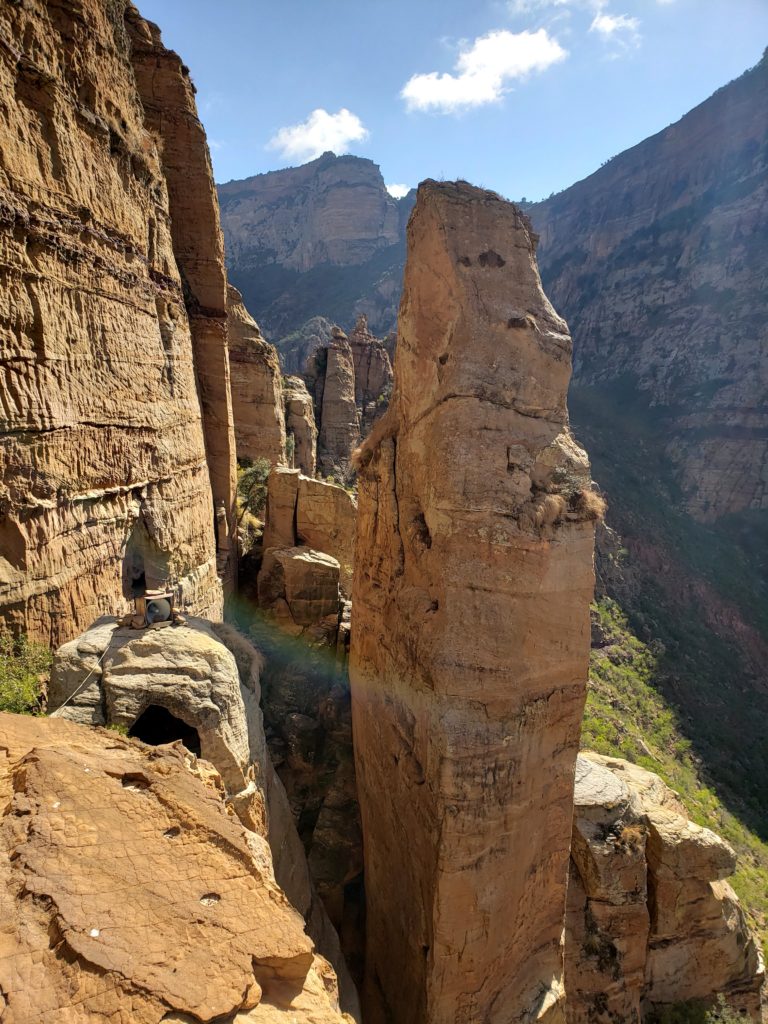
And then, with some relief, we entered the sublime church.
The cavern itself was maybe about 20 m2 in size (225 ft2), but the paintings – dating back a millennium or more – filled the walls.
One of the most notable and historical of these depicted the founder of the church heading to Ethiopia from Syria. In the bottom left was the lion symbol representing the country.
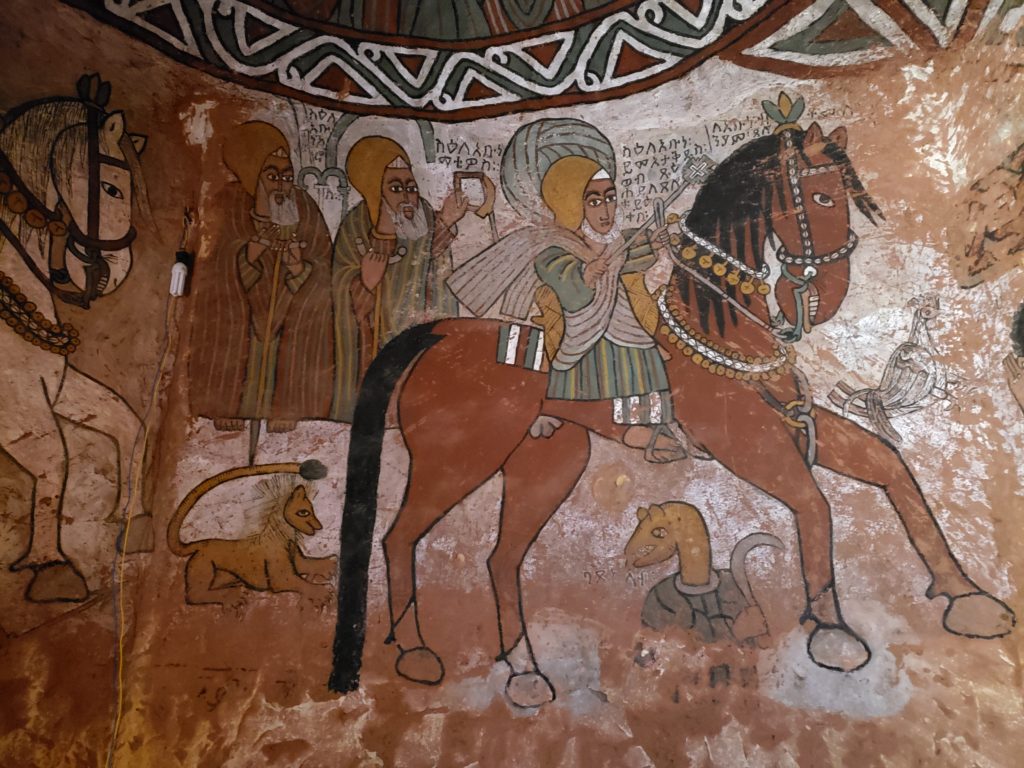
Even the “support” columns for the cave were decorated with Biblical imagery. On this one, Mary and Jesus are flanked by two of the gospel writers.
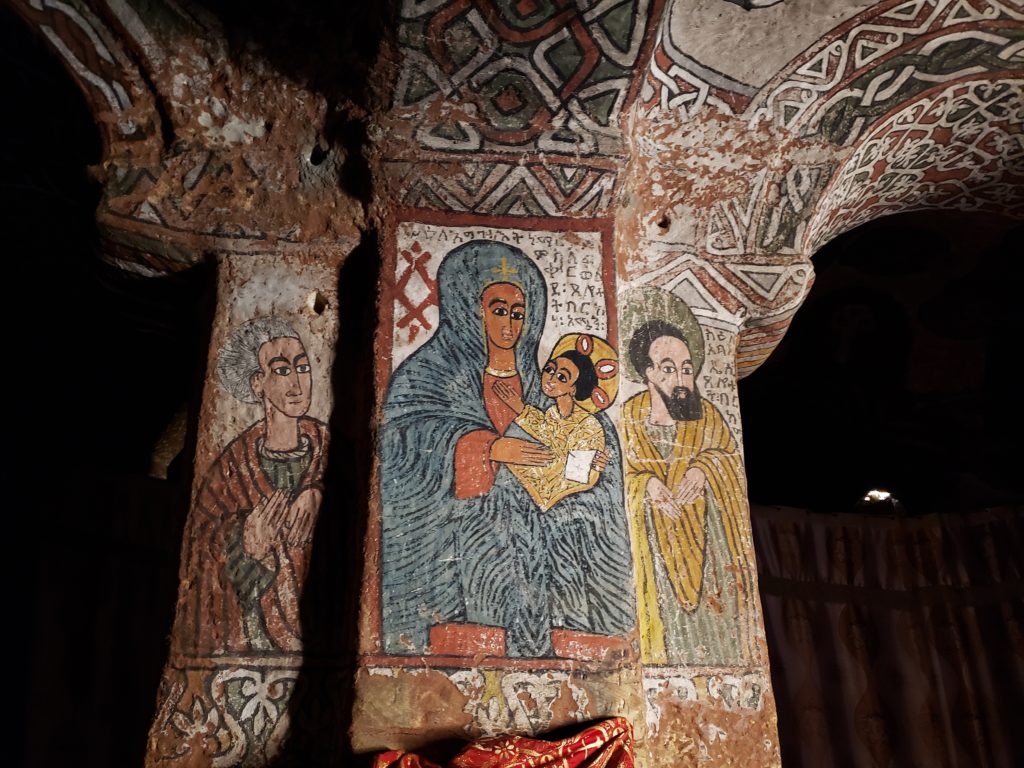
On another richly adorned wall of the cavern, yet more history. The figure in the right foreground (with a pilgrim’s staff and what looks like an iPad) is, we were told, the originator of all the music chanted by the priests since the end of the first millenium.
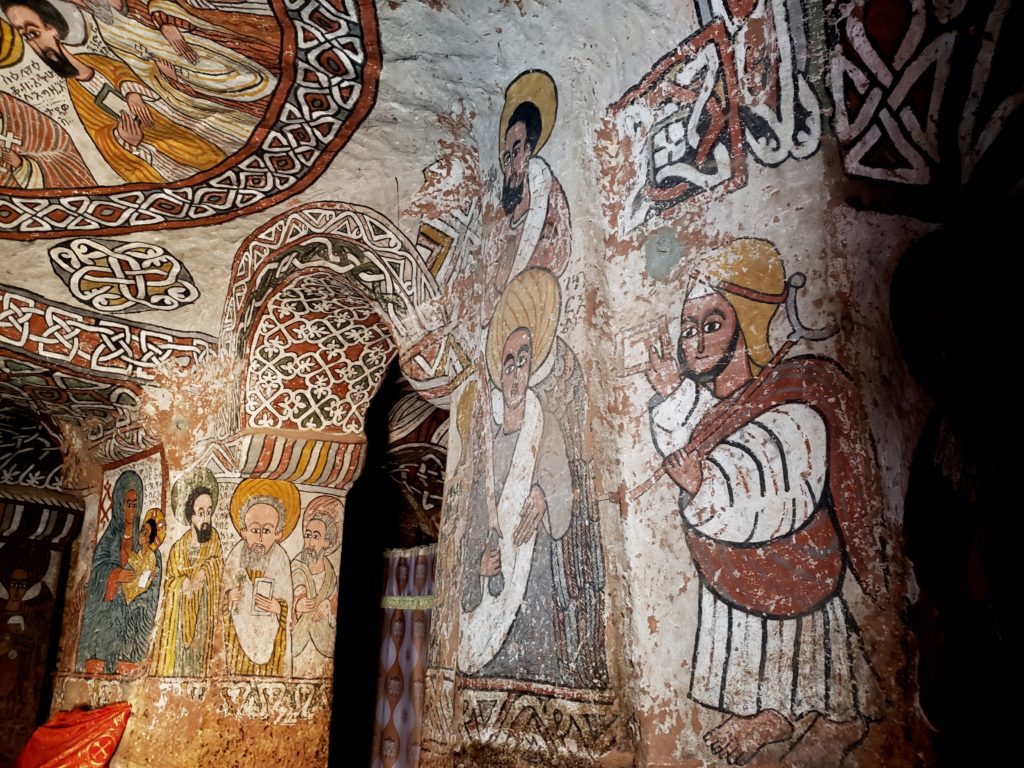
Once we had enjoyed the thrill of the church itself, we gathered our strength for the climb back down. There is only one way to return, the way we came. So we breathed deeply and then did it all in reverse.
And then we learned that all the local villagers above the age of 7 do this climb every week out of religious zeal.
Asheton Mariam
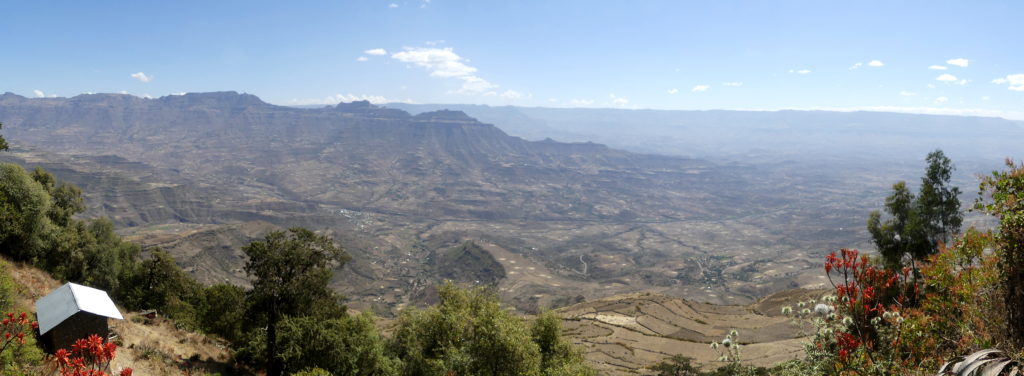
As we reached this mountain top, the end of a 5 km (3 mile) climb to 600 meters (2000 feet) above the highland town of Lalibela, we were enwrapped by clouds of incense and the sound of clanging instruments and chanting pilgrims. After the breathtaking ascent, we could not help but feel the spirituality of the place.
Shortly after we arrived, a more formal service began.
Beneath an imposing crucifixion, the Coptic priests prepared to conduct their service for over a hundred people of all ages who made the climb before us. The door behind them leads to the Holy of Holies, the space which only they can enter for their preparations.
Coptic Christians often seem intensely moved in their prayers, lamenting perhaps the weight of their sins and the difficulty of repentance. Here, two pilgrims at the porch entrance to the mountaintop church respond to the start of the service.
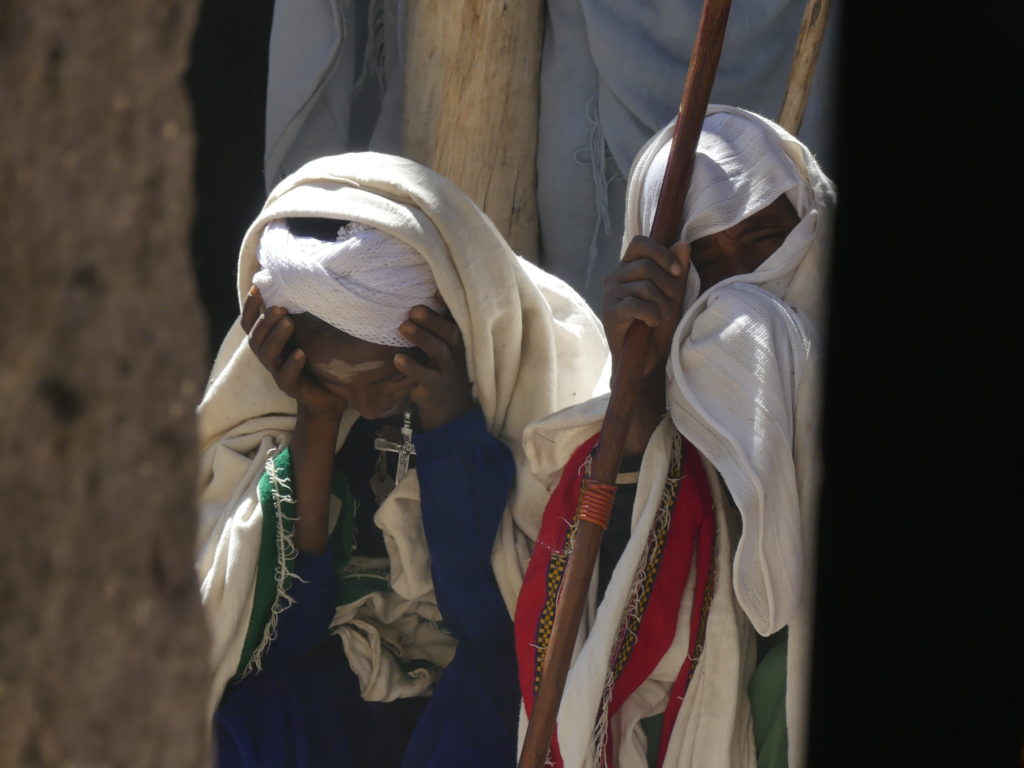
Within the church, incense enveloped other pilgrims as they prayed along the cave wall.
Asheton Mariam, dedicated to the Virgin Mary, was the first rock cut Ethiopian Coptic Christian church built by righteous King Lalibela (12th-13th c.). For our tour of the other churches, click here to read the post about the town of Lalibela.
An imposing natural sandstone dome crowns the mountain, looming over the hollow from which the church was cut. The building is considered semi-monolithic, part cave and part temple. You can walk completely around monolithic churches, only walk into caves, but walk partly around semi-monolithic churches.
At a break during the services, a Coptic priest presented to us several of the treasures held within the mountaintop church, some dating back 1000 years to King Lalibela’s time. This is an antique devotional book painted on wood with very Ethiopian figures: Saint George defeats the dragon of sin on the left, while Mary and Jesus smile benignly at each other on the right.
The church is much rougher in appearance than most of those in the town below. Later, in Lalibela’s hilltop city far below, he carved 11 more churches out of rock to form a holy city representing Jerusalem (see post). During the week before Ethiopian Christmas on the 7th of January, 100,000 devotees make a pilgrimage to the town to celebrate the birth of the holy spirit through Jesus (see Epiphany). More journey here throughout the year.
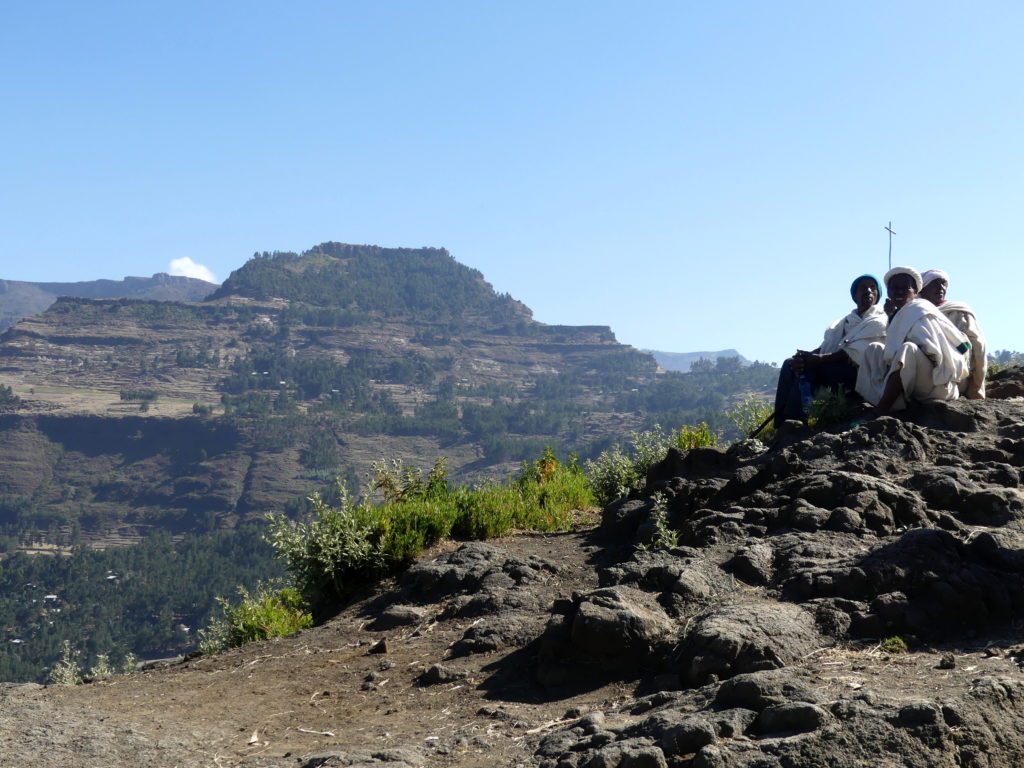
Many of them – young and old, often very old – make the same difficult, devotional climb to this high church of Asheton Mariam.
(To enlarge any picture above, click on it. Also, for more pictures from Ethiopia – along with Eritrea and Djibouti -, CLICK HERE to view the slideshow at the end of the itinerary page.)


